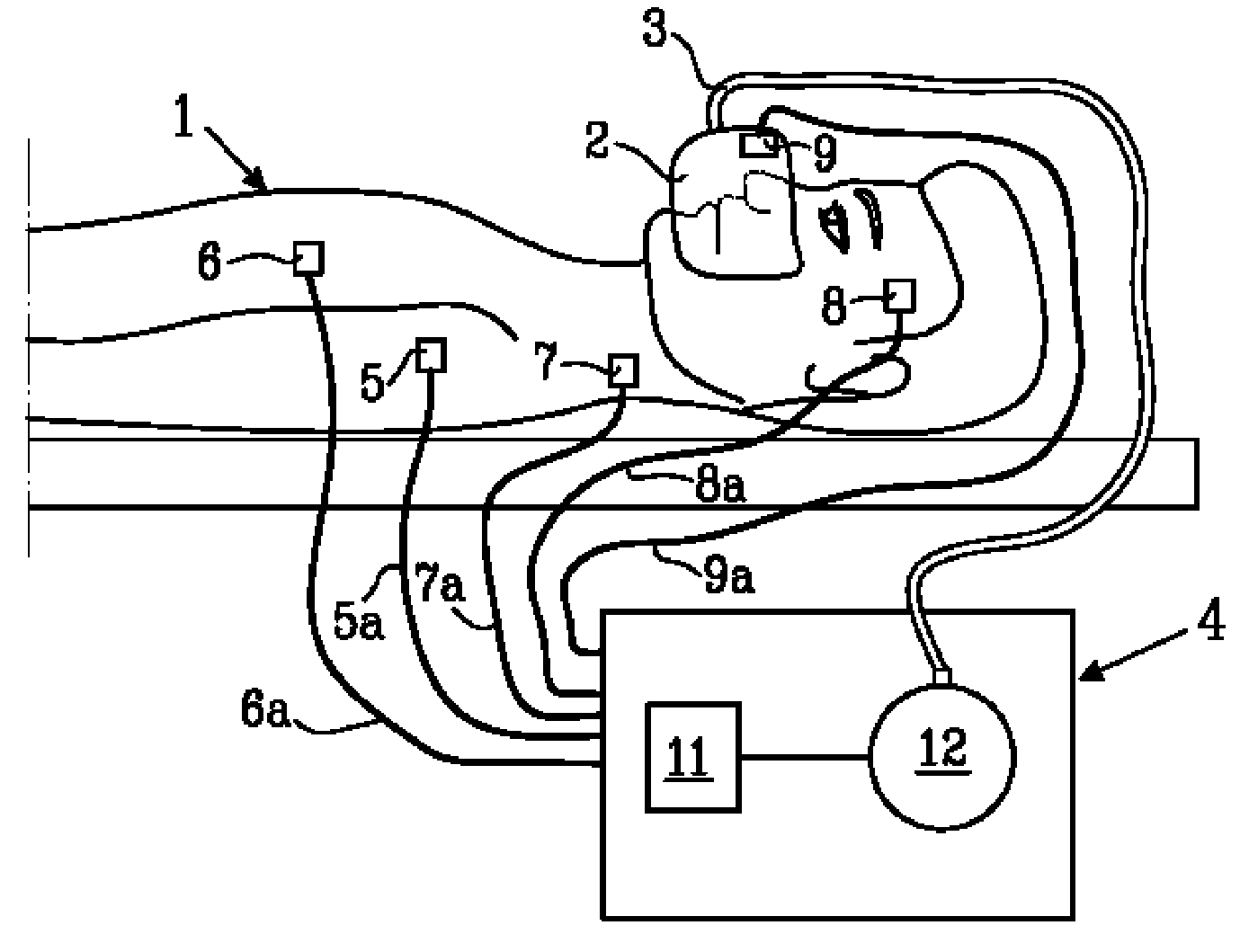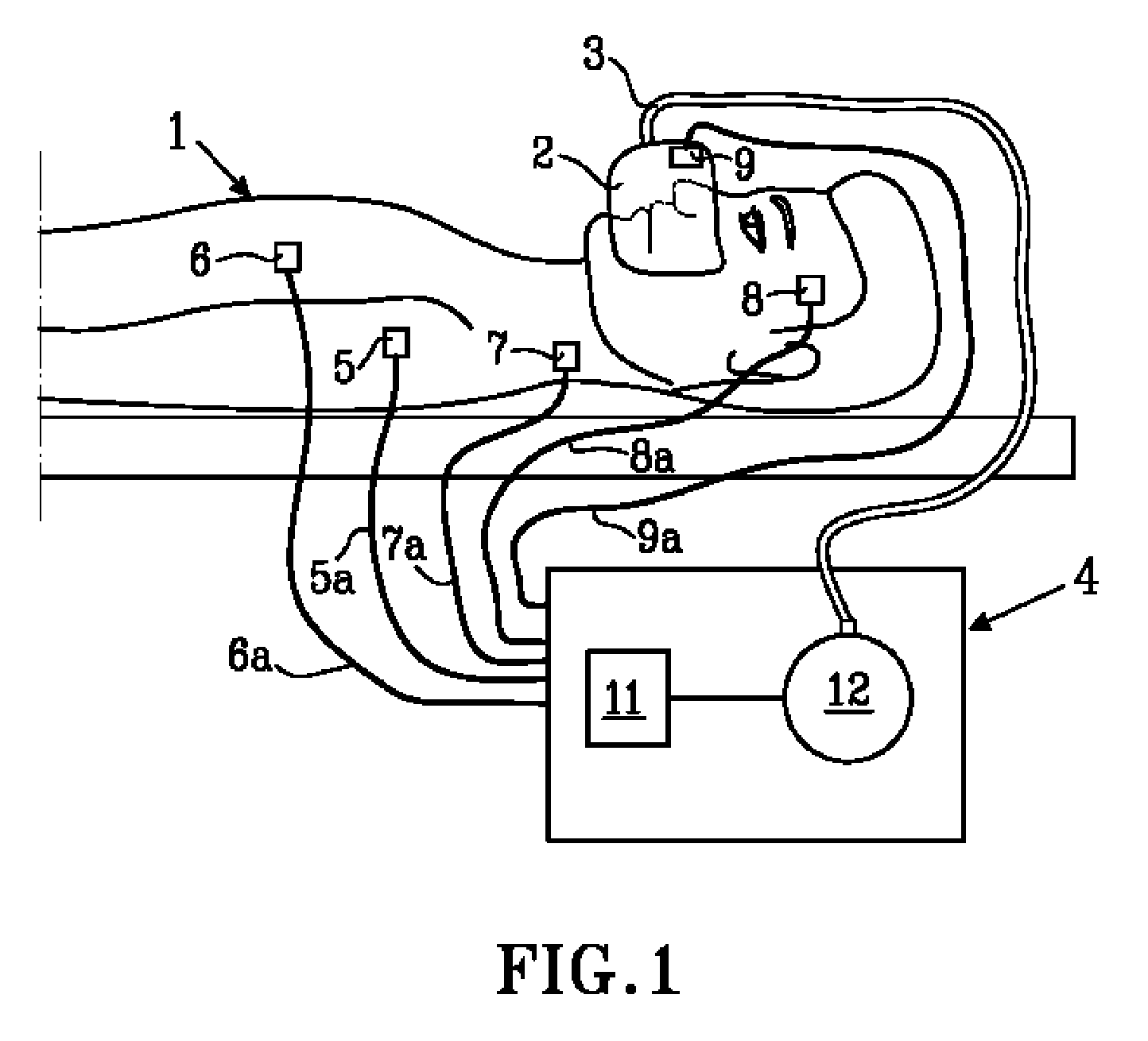Multilevel Ventilator
- Summary
- Abstract
- Description
- Claims
- Application Information
AI Technical Summary
Benefits of technology
Problems solved by technology
Method used
Image
Examples
Embodiment Construction
[0025]In FIG. 1 a schematic mechanical ventilation system used for the treatment of hypoventilation disorders is depicted. A ventilation system comprise a mechanical ventilator 4 supplying pressurized breathing gas, tubing 3 for guiding breathing gas to the patient 1, a breathing mask 2 or similar for administrating the breathing gas to the patient 1, sensing means 5, 6, 7, 8, and 9 for determining the physiological status of the patient 1. A mechanical ventilator 4 is supplying breathing gas for instance as a positive airway pressure via a tubing 3 and through a mask 2 to a patient 1. The mask 2 can be a face mask 2 covering both the mouth and nose or a nasal mask covering only the nose or nostrils depending on the patients needs. It can also be a hood covering the complete head or body of the patient.
[0026]The breathing gas may be of any suitable gas composition for breathing purposes as understood by the person skilled in the art, the composition depending on the physiological st...
PUM
 Login to View More
Login to View More Abstract
Description
Claims
Application Information
 Login to View More
Login to View More - R&D
- Intellectual Property
- Life Sciences
- Materials
- Tech Scout
- Unparalleled Data Quality
- Higher Quality Content
- 60% Fewer Hallucinations
Browse by: Latest US Patents, China's latest patents, Technical Efficacy Thesaurus, Application Domain, Technology Topic, Popular Technical Reports.
© 2025 PatSnap. All rights reserved.Legal|Privacy policy|Modern Slavery Act Transparency Statement|Sitemap|About US| Contact US: help@patsnap.com



